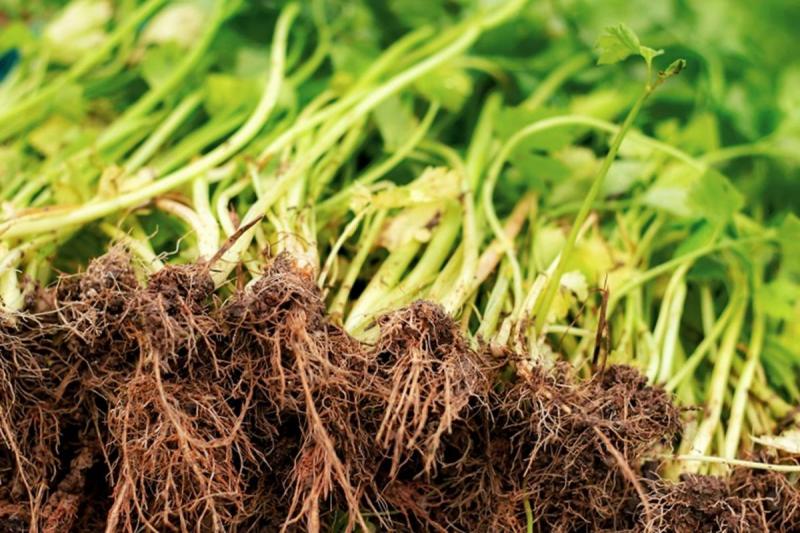Plant Roots and Mycorrhizal Fungi: The Plot Thickens in a 500-Million-Year-Old Mystery
By Eleonore Lebeuf-Taylor
24 May 2022

Plants have a secret: underground, their roots are tightly bound to a huge network of diverse fungi, which help them extract essential nutrients from the soil in exchange for crucial sugars. Although this symbiotic relationship is over half a billion years old, we are only now starting to explore its intricacies.
The particular type of fungi involved in this partnership are known as mycorrhizal fungi. In addition to acting like extremely fine roots – and exploring the soil in ways that roots cannot – they can help plants cope with drought by binding root hairs to the soil and keep root pathogens at bay.
Dr. Hafiz Maherali is an evolutionary biologist in the Department of Integrative Biology who studies the fascinating world of plant-mycorrhizal fungi coevolution – and why the symbiosis is still so common today.
The plant-mycorrhizal fungi relationship evolved over 500 million years ago, before plants colonized land, says Maherali. “If you fast-forward to the present day, plants dominate the terrestrial habitat, and over 90% of plant species form these symbioses with mycorrhizal fungi.”
The flip side of this ancient relationship, however, is that plants have had a long time to wean themselves off their dependence on fungi. As Maherali puts it, “Plants, especially angiosperms, have evolved extremely complex fine root systems and they can do things that mycorrhizal fungi would have done for them in the past.”
Together with Honours student Joshua Persi, he recently explored one mysterious facet of this ancestral partnership: can mycorrhizal fungi actually alleviate the need for plants to produce fine roots?
Compared to coarse roots, fine roots can increase the plant’s uptake of water and nutrients because they have a higher surface area-to-volume ratio, which increases absorption area. But building fine roots is expensive, explains Maherali.
“There’s a construction cost for making the fine roots, but there’s also a really large respiratory cost, because the roots consume carbon and don’t produce sugars like leaves do.”
He and Persi wanted to see whether plants would produce coarser roots, which would be less energetically costly, when inoculated with fungi.
They grew plants in a highly controlled environment both with and without a common mycorrhizal fungus. The two Medicago species the researchers used – relatives of alfalfa – have some of the finest root systems in the plant kingdom, and can grow up to ten times bigger in the presence of mycorrhizal fungi.
Crucially, the researchers wanted to control for the fact that larger plants, whose growth is enhanced by the presence of mycorrhizal fungi, naturally produce bigger roots.
“We needed to know if the effect was because plants were bigger or because the fungi were actually changing root development independent of plant size,” explains Maherali. In their experiment, they tracked the plants over several developmental stages so that they could account for plant size as it changed over time.
The researchers expected to see “plasticity” in the plants’ root development depending on the presence or absence of fungi – in other words, that the presence of fungi would promote the building of coarse roots rather than fine ones. But the results were surprising.
“The bottom line is that we didn’t see any evidence for plasticity. The fungi stimulated plant growth, but they didn’t really seem to change the morphology of the roots.”
While the results were not what they expected, Maherali notes that they bring up a bigger question: “Why do plant species with fine roots that are seemingly not plastic maintain the symbiosis, and why do they have such a strong mutualistic response to the fungi?”
It’s a question Maherali and his team will be actively exploring in future work.
Charles Darwin perhaps put it best when he described the origin of the incredible diversity of species we see today as “that mystery of mysteries.” The diversity found in the plant kingdom, and the ancestral symbiosis with mycorrhizal fungi, is one such mystery that will continue to fascinate generations of scientists to come.
This study was funded by the Natural Sciences and Engineering Research Council.
Read the full study in the International Journal of Plant Sciences.
Read about other CBS Research Highlights.